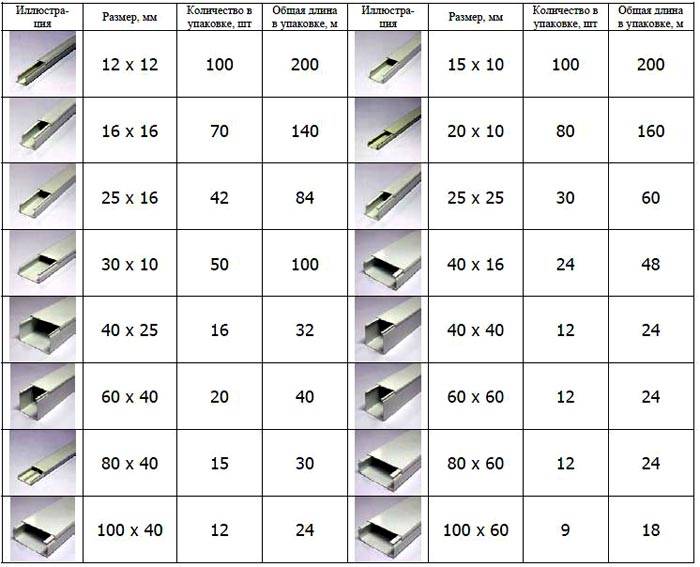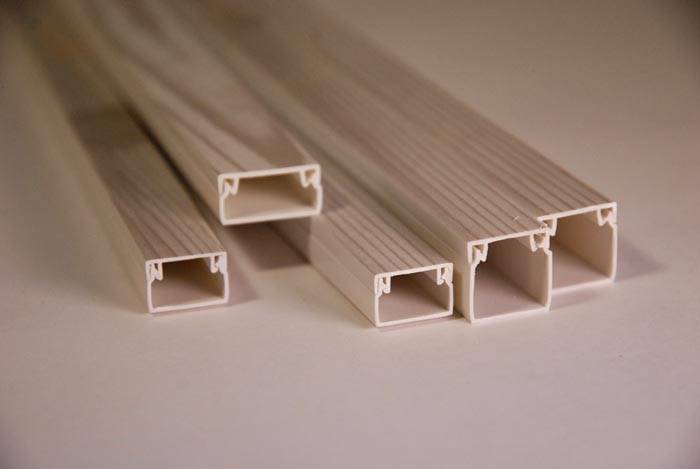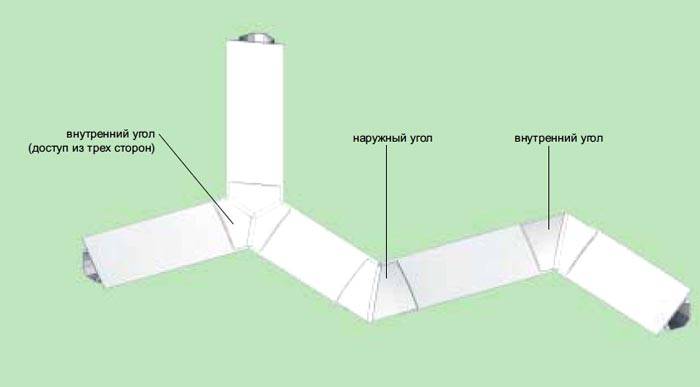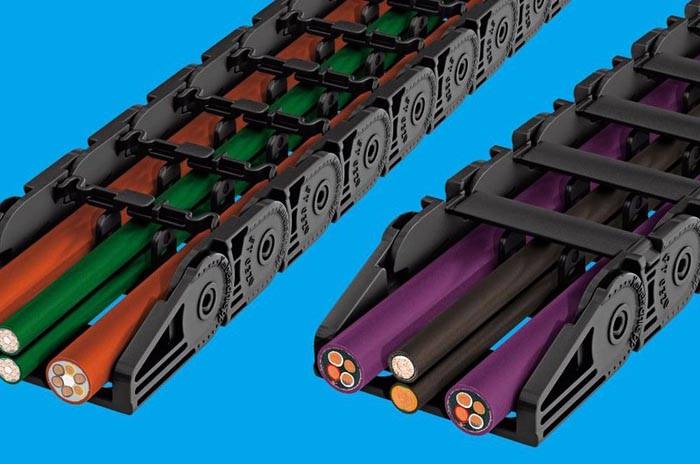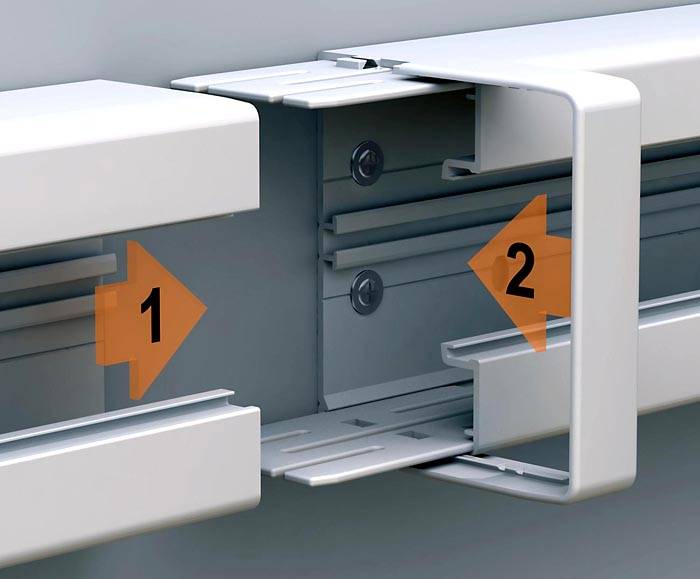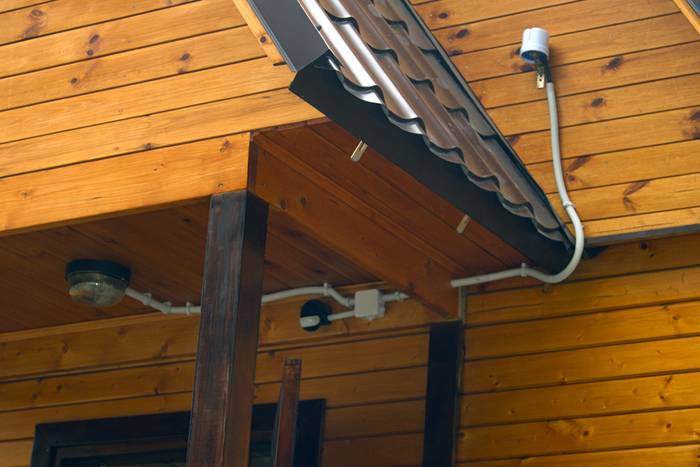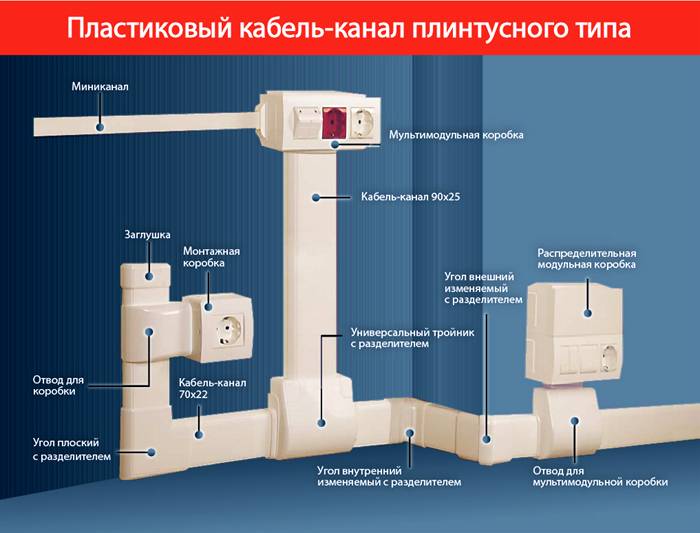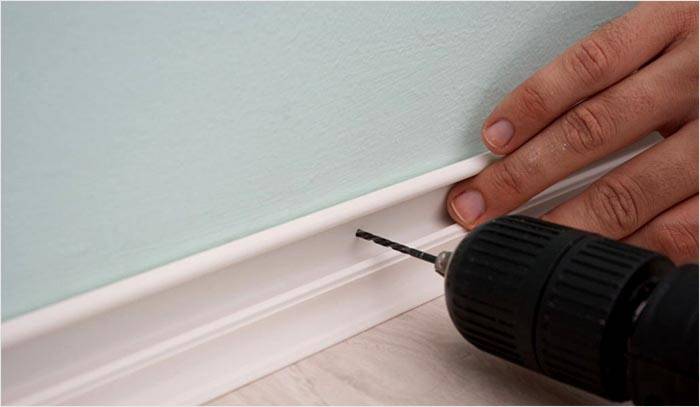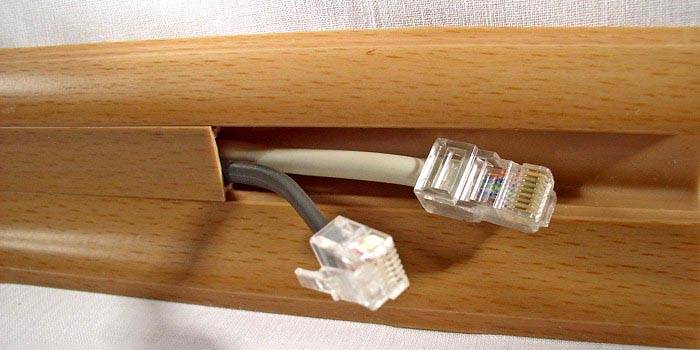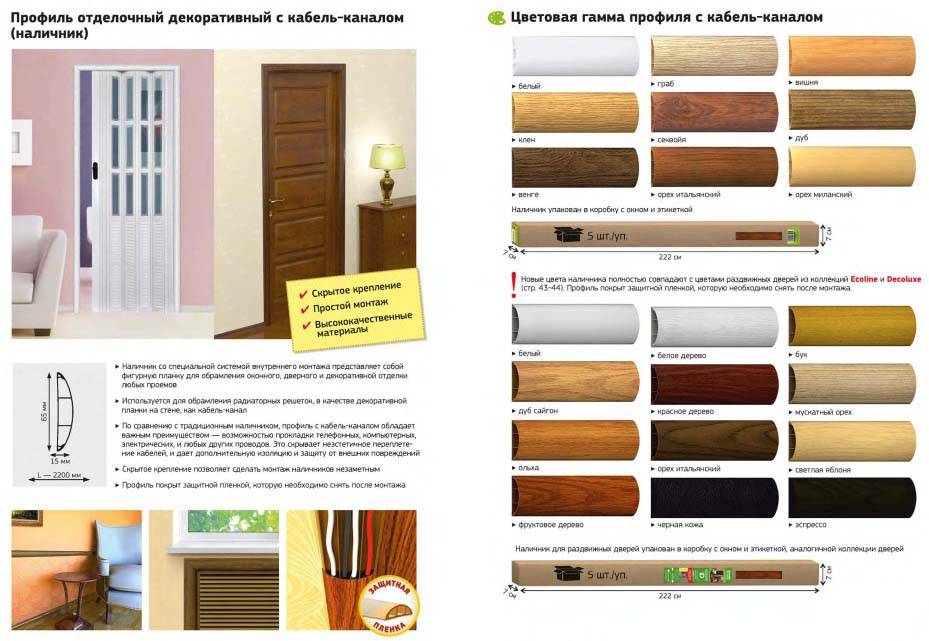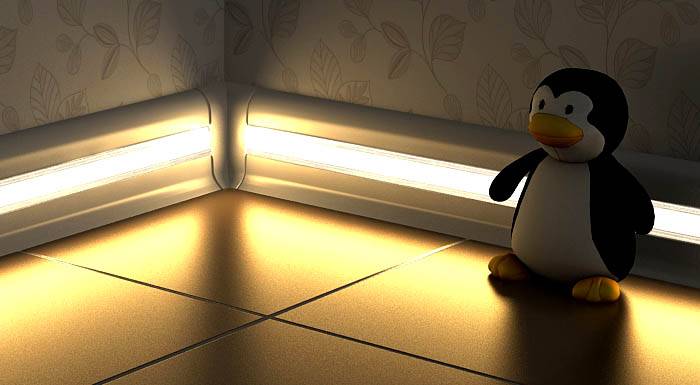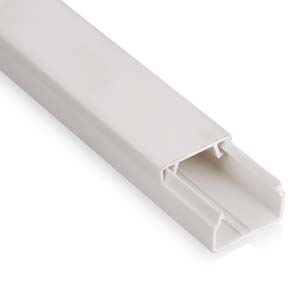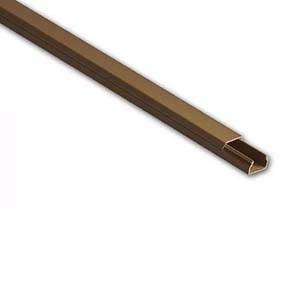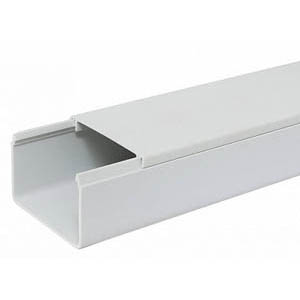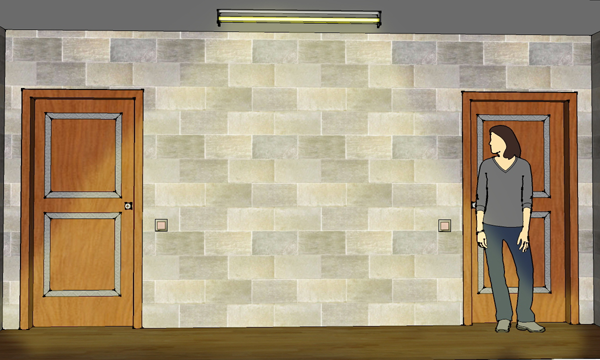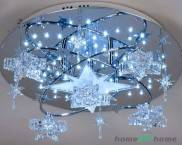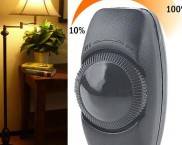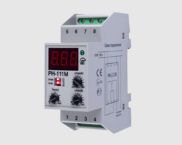How to choose the right cable channels: types and sizes of wires
Cable ducts for electrical wiring can be installed not only indoors, but also on the streets. They represent an electrical junction box made of a solid profile, inside which wires are placed. Before using such material, you need to know what the cable channels are. The types and sizes matter when installing hidden and open electrical wiring. In our review you can find out what cable channels are used for and how to choose them correctly.
The content of the article
- 1 What are the cable channels for electrical wiring: what is it
- 2 Materials for cable channels
- 3 Dimensions of cable channels for electrical wiring: selection rules
- 4 What are the color solutions of cable channels
- 5 Ways to use cable channels for laying open wiring
- 6 The use of cable channels for decorative purposes: photo examples
- 7 Where to buy cable channels for electrical wiring: types, manufacturers and prices
- 8 Video: cable channels for electrical wiring
What are the cable channels for electrical wiring: what is it
A cable duct is a metal or plastic box for electrical wiringwhich can be used indoors and outdoors. The structure consists of a body and a cover. Most often they have a square or rectangular cross section. The body can be perforated or one-piece. The body part and the cover are connected using a special lock.
Cable ducts are installed in different systems. They come in a variety of colors and are highly aesthetically pleasing. The interior space can be divided by partitions. This allows you to separate low-current and power cables, which are laid separately. When choosing plastic products, you should pay attention to the incombustibility of the material.
There are different types of cable channels:
- Mini... The channels have a small diameter and are used for laying Internet lines, television or telephone.In such a channel, 1-2 wires of medium thickness are placed. They are made of plastic and attached to the walls with self-tapping screws and glue. The channel cross-section varies from 10 × 10 to 60 × 80 mm;
- Parapet guides... Made of plastic, but larger. Such structures are installed in apartments and offices. The swing angle can be adjusted from 7 to 45 degrees. It is convenient to connect sockets and switches to such guides. The section of structures varies from 10 × 20 mm to 100 × 60 mm. In this case, the type of profile can be W-shaped, L-shaped or T-shaped. Also, profiles can be universal or curly;
- Skirting boards. These channels are installed at the joints of walls and floors. Inside such skirting boards there are cavities for laying wires. The dimensions depend on the width of the diagonal wall, which can be 50 or 70 mm. Such channels are used for any premises and are resistant to temperature changes. Such channels are fastened with self-tapping screws. The joints are covered with corners and plugs;
- Flexible channels. Structures are corrugated and chain. The latter protect the wires from vibration, mechanical damage and chemical attack. They are corrosion resistant, flexible and easy to access. Corrugated structures are made of non-combustible plastics;
- Corner ceiling channels. They are plastic parts in the form of a triangle. The joints are cut at a 45 degree angle and closed with plugs. The box is distinguished by its beautiful appearance and color palette. In this case, the size of the inner part can be 40 × 40 mm;
- Outdoor. Cable trays are required when wiring to lights or to a table is required. At the same time, the color scheme does not differ in variety. The most commonly used palette is white, black or gray;
- Transparent channels for LED strips. Inside the box there is partitionto which is fixed Light-emitting diode... The width of the tape can be 5-20 mm.
How to choose a cable channel correctly can be seen in the video:
When choosing products, it is necessary to pay attention to GOSTs of cable channels. The possibility of installation depends on the degree of flexibility and rigidity. Rigid structures can be in the form of boxes with holes or blind boxes. Flexible cable channels are represented by corrugated pipes, tracks and chains.
Note! Channel sizes are selected taking into account the diameter and number of wires. At the same time, there are no special restrictions on the number, but the lid must be free to close.
Materials for cable channels
Wire boxes are often made of metal or plastic. Plastic is a cheaper option. Structures made of it are not particularly durable, therefore they are used for ceilings and walls. These guides must be non-flammable and not emitting much smoke.
Metal elements are of higher quality. Galvanized steel and aluminum ducts can withstand significant loads.
Designs of cable ducts for electrical wiring are as follows:
- galvanized steel products are fireproof and are used for installation of video surveillance and warning systems. Such channels are protected from electromagnetic and mechanical influences;
- anodized aluminum boxes protect the wiring from electromagnetic action. Such material is resistant to fire, mechanical damage and durable;
- refractory plastic box are popular. The cross section of such products can be rectangular, triangular or square.
In rooms with a high risk of fire, it is recommended to install metal ducts. They are used in factories and workshops.
In the video, you can see how cable channels are attached and used:
Metal cable ducts: material characteristics
A metal wiring box has many advantages. Here is some of them:
- protection against mechanical and electromagnetic influences;
- ease of installation work;
- excellent level of fire safety;
- various colors;
- latch cover.
Elements of metal boxes for electrical wiring:
- 90 degree angle for upward turn;
- outside corner for downward turning;
- flat head 90 degrees;
- T-piece;
- X - shaped section.
In industrial plants, anodized aluminum boxes are often used. They are used for installation in exposed wiring.
The steel electrical box has the following advantages:
- increased level of impact resistance;
- protection against electromagnetic interference;
- resistance to sunlight;
- resistance to temperature extremes.
The choice of a plastic box for wires: degree of rigidity and other characteristics
Common options include plastic wiring ducts. This option is a closed design. The section and boxes can be any: square, rectangular or triangular. Sizes and colors may also vary.
It is worth highlighting the following advantages of a plastic cable channel:
- light weight;
- resistance to corrosion;
- simple fastening system;
- the cover is mounted without any tools;
- PVC cable channel has a low cost;
- the ability to cut an element of the required length;
- high decorative properties;
- ease of care;
- there is no deformation with temperature jumps.
Dimensions of cable channels for electrical wiring: selection rules
The price largely depends on the size of the plastic cable channels. The manufacturer also affects this indicator. The length of the box is standard. The following products are especially popular: 12 × 12, 40 × 40 and 100 × 60 mm. From corner products 40 × 40 mm are in demand.
The cable must be laid loosely in the box. In this case, it is better to leave a small margin of space. Also, with a margin, you need to select the length of the structure.
The standard dimensions for electrical wiring boxes are 2 meters. The main channel is often laid along the ceiling. It should be larger than the vertical outlets to outlets and switches. When purchasing cable channels, do not forget about accessories. All kinds of plugs, tees and adapters will make installation easier.
The quality of the parts is also important. The lock should be easy to close and open. The ends should be smooth and even. The attachment points can be located at a distance of half a meter from each other. As the temperature rises, the plastic can expand.
Let's consider what the sizes of cable channels are. For a standard length of 2 meters, the cross-section can be as follows in mm:
- 12×12;
- 15×10;
- 16×16;
- 20×10;
- 25×25;
- 30×10;
- 40×40;
- 60×60;
- 80×60;
- 100×60.
There is also a 150 × 100 cable channel. But the most popular size is 25 × 16 mm.
What are the color solutions of cable channels
The choice of cable channels depends on the overall interior design. White products are presented in a large assortment, but colored boxes for wires are often used. Fittings must be used in suitable colors. Different types of tees, adapters and plugs must match the color palette with the cable channels. Wood-colored products are especially popular. Such structures are used in the arrangement of wooden houses and baths. The color palette includes more than 10 items. Colors such as beech, pine and oak are common.
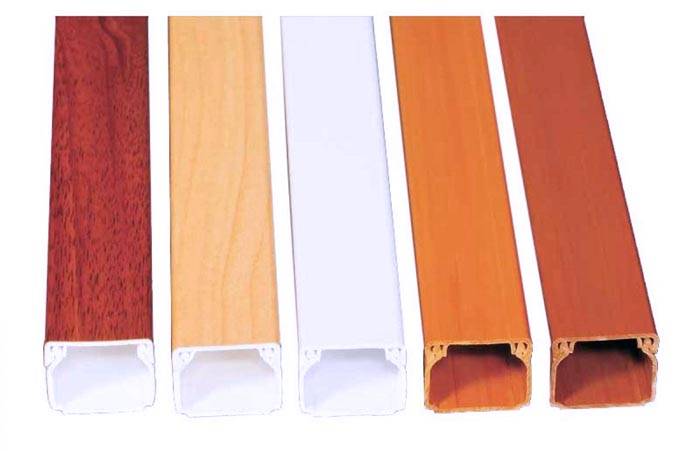
Depending on the interior of the room and the color scheme used, the color of the boxes for wiring is selected
The use of a colored cable channel allows you to choose the material taking into account the basic design of the room. The most popular products are white or wood-like, as they are used to decorate office space. An unusual version of the black cable channel.
Ways to use cable channels for laying open wiring
A wide range of accessories for electrical wiring allows you to implement the most complex projects. The installation of the wall box is carried out taking into account the height of the sockets, junction boxes and switches. For open spaces, wall and floor metal cable ducts are used. This provides protection against the effects of electromagnetic waves. Such options are relevant when installing information wiring.
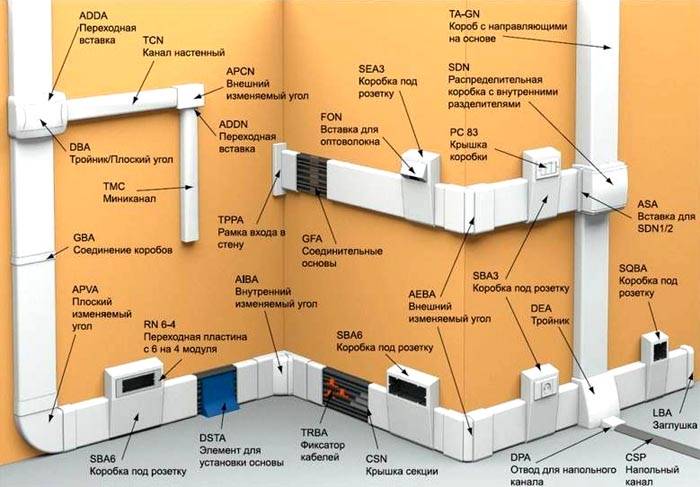
Before proceeding with the installation, it is worthwhile to understand the main elements of the wiring diagram
The corner cable duct is used for mounting LED strip lighting. Most often, such products are made of aluminum, and the cover is made of heat-resistant plastic.
For home, a flexible cable channel for wires is often used. Lightweight metal models are also used. There must be enough space inside the case for a certain number of cables. It is important to check the availability of the necessary fittings for the cable products.
When choosing products, you need to count all locks, mounting fasteners and plugs on the spot.
You can organize electrical wiring according to an open circuit using the following types of electrical boxes:
- wall box with two-sided and one-sided lock;
- floor plinth with separate sections for low-current wires;
- ceiling material;
- structures of cable channels on the floor with protection against mechanical stress;
- corrugated pipes and trays used in utility rooms or for external facades.
Related article:
Corrugation for wires and cables. It will not only protect the wires from damage, but also act as additional insulation, eliminating the risk of electric shock if the integrity of the cable is violated. What is a protective corrugation, how to mount it correctly? We will talk about this in more detail in the article.
For the local area, street cable channels are used.
Installation of wall boxes is carried out using self-tapping screws. Install them at regular intervals. The load is due to the number of wires inside. For fixing on a wooden surface or on drywall it is necessary to screw in every 40-50 cm. If the walls are uneven, then the distance may be shorter to hide flaws.
For work with a brick or concrete wall, installation is carried out using dowels. For work, you need a perforator with a nozzle, the diameter of which is 6 mm.The simplest mounting option is liquid nails, which are construction glue.
Floor channels will allow you to mask any wiring so as not to spoil the interior. In this case, the structure is combined with the plinth. Before installation, markings should be made on the walls and floor. Interestingly, plastic cable channels are not mounted to the floor, but to the wall. Installation is carried out with screws, liquid nails and dowels.
Installation of wiring in the channels is carried out after the completion of finishing work. The walls are marked with markings for the cable mesh. Laying is done from the distribution board. First of all, the trunk lines are installed, and then the branches from them. If there are no holes in the channels, you can make them yourself.
The channel section is fixed to the wall. The line should be positioned in the center of the holes. After that, fastening is carried out with dowels. After installing the fittings, the box is cut to the required length.
The features of cable installation in a box are shown in the video:
The use of cable channels for decorative purposes: photo examples
When decorating interiors, a decorative cable channel is often used. For decoration and zoning, masked lighting is used with the use of corner boxes. Triangular cable channels are placed in the recesses of stretch and suspended ceilings. Decorative cables can be in the form of brass and bronze tubes. This option is used when installing retro wiring.
Round cable channels for electrical wiring are distinguished by more complex installation. It is more difficult to lead wires into such a tube than into corrugated boxes.

Decorative cable channels with a round cross-section made of bronze are used for a specific color scheme
The main purpose of the transparent cable duct is not only to protect against LED fire, but also to prevent dust from entering the light element. It is dirt that can cause a short circuit.
Electrical installation using cable channels is suitable for rooms decorated in any interior style... Copper or aluminum triangular conduit can be used for installation. Decorative cable ducts are often made in the form of bronze tubes. This option is suitable for semi-antique premises.
Colored designs are selected taking into account color palette environment. Gray shades will give the room a more formal and businesslike look. For residential premises, products are more suitable for wood or in a beige color palette.
Special decorative wiring has the following advantages:
- stylish and original design;
- the best option for log cabins and other wooden buildings;
- the ability to visually control the electrical supply of the house;
- ease of installation without plastering, chipping and cementing.
Where to buy cable channels for electrical wiring: types, manufacturers and prices
You need to understand the manufacturers of such products if you want to buy cable channels for your home. Many companies offer high quality boxes. In such a situation, it is important to distinguish a fake. You need to ask the consultant for the necessary documents for the product.
Consider some branded manufacturers:
- Hager. The German manufacturer specializes in office products, but due to the high quality of the boxes, they are also used in residential premises. The products are made in a modern design and are suitable for many interiors. The tehalit.BRP series is used for laying trunk lines. The universal models are the tehalit.LFF series boxes, which are distinguished by their simple installation;
- Legrand. The company offers profiles with different standard sizes and widths up to 220 mm.There can be up to three sections inside the case. The cable duct is completed with two types of partitions. Some are mounted in a special groove, while others are flexible and glued to the wall.
- DKS. This domestic manufacturer produces 4 types of channels. Wall-mounted ones have a flat cover and are compact in size. Floor boxes are completed with turns. They are easily connected to each other. Mini-channels are available in dark brown and white;
- Schneider Electric. The manufacturer offers the Ultra series with two types of channels. Switches and sockets are mounted in modular frames. Mini channels have a U-shaped cover. For quick installation, you can choose products with self-adhesive tape.
We offer to see some types, sizes and prices of cable channels in our table.
Table 1. Average cost of cable channels
When choosing a cable box, you need to take into account the size, appearance, manufacturer and product cost. Correctly selected cable channels will mask unsightly wires and will be a great addition to a modern interior. We hope you find our article useful. If you want to add something, write in the comments.
Video: cable channels for electrical wiring






















